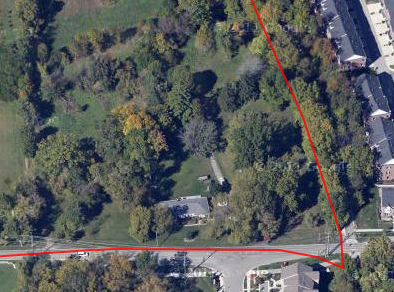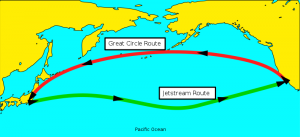 It’s been a while since we’ve posted a race recap!
It’s been a while since we’ve posted a race recap!
We participated in the second running of the Carmel Championship Weekend, Christopher the half marathon, and Emily and David ran the 8k together. This was David’s longest race to date.
I stopped by the expo at the Monon Center Friday afternoon to pick up our packets. I entered the eastern building, where the expo was the previous year, just as a big rain storm let loose. Apparently the location had been switched to the west side of the building, which was no problem, except for the face that I had to dart across to the other side through the rain. Oops. The organizers had set out three or four 3‑ring binders, one for each of the 8k, half, and full, with listings of participants and their numbers. With so many participants trying to look up their number, there was a rather irritating backlog. I had to wait in two lines because our family was participating in both the 8k and the half. Many events will email participants with their number, and if they sent one, I missed it. For a medium-sized event like this, it sure would have been nice.
The spring running season officially started for thousands of people the next morning. It was quite a chilly start. Pre-race details seemed well-planned for the most part, including adequate parking and bathrooms near the start. My only gripe was that the corrals for the half and full seemed rather small. There was a lot of room on the street, but the pace groups were all crammed unnecessarily close to the start line. The only way to enter the chute was from the rear, so the chute was clogged with people who were unable to move up to an appropriate starting location. Spacing out the corrals more would be a great improvement for next year. After the chute is full and people are organized into their desired pace groups, then people can start to sardine towards the start. There’s no reason to cram until right before the countdown.
The first mile or two of the route was on a fairly narrow street, further exposing the importance of being able to line up according to pace. Several runners had to use the sidewalks for the first mile to adjust their position in the pack. When faster runners can line up closer to the front, and walkers can be closer to the back, everyone can have a safer and more enjoyable start. Regardless, these things sort themselves out eventually. I’m just sure that walkers don’t appreciate runners darting through and around them any more than runners like to risk injury by weaving around others.
Weaving through side streets and neighborhoods was a pleasant way to start the race. While it was clear that later on in the race, some residents were greatly inconvenienced by having to take an alternate route through their neighborhood, the few folks in the early miles of the race who were actually outside were quite friendly. None offered to share their hot chocolate with us, however.
I really enjoy races that follow stretches of trails. The tree-lined Hagen-Burke trail in Carmel is very nice. It’s built to the same standards as the Monon Trail — wide, and built of smooth asphalt. It meanders more than a rail-trail, lending it additional interest. Inexplicably, the mile markers along this trail were lying flat along the shoulder, just as they were last year. Are there some kind of funny Carmel regulations disallowing these signs from being put up? And speaking of strange Carmel-isms, this trail had a handful of roundabouts, which did not have arrows marking the turns for the race route. Toward the front of the pack, runners were spaced rather far apart, and at two of these roundabouts, I did not have a direct line of sight to the runner in front of me. Fortunately, I guessed correctly at which way to go, but a little more signage, or even just an arrow spray-painted on the asphalt, would have given more assurance.
 From the Hagen-Burke trail, the route turned onto the Monon Trail, which is a favorite of mine. Apparently too much so, because I passed right by the right turn onto 136th. Just as I crossed the street, I snapped out of my focus and realized that something didn’t feel right. I looked behind me and realized that I should have turned. Strangely, the volunteers didn’t yell at me, either before or after I passed, that I was being a dummy. Oh well. My GPS watch caught me overshooting the turn as I was heading south on the trail.
From the Hagen-Burke trail, the route turned onto the Monon Trail, which is a favorite of mine. Apparently too much so, because I passed right by the right turn onto 136th. Just as I crossed the street, I snapped out of my focus and realized that something didn’t feel right. I looked behind me and realized that I should have turned. Strangely, the volunteers didn’t yell at me, either before or after I passed, that I was being a dummy. Oh well. My GPS watch caught me overshooting the turn as I was heading south on the trail.
And more strangely, 136th, a two-lane road with little shoulder to speak of, was open to traffic in both directions. There were traffic cones down the center of the street, but that only meant that cars had to stay in their lane, making it impossible to overtake and pass runners safely. That had better change next year, or else someone is going to get hurt. There was a car between me and the next runner in front of me, and it was clear that the next runner was very uncomfortable with how closely the car was following. Crabby drivers, two-lane roads, and runners do not mix. Now, I am fully aware that it is difficult to close so many streets in a city of this size, but the race organizers need to make sure this street is closed and direct traffic to alternate routes, or change the race route to avoid this stretch of road. As it was, that route is unsafe, and I won’t participate again next year if it is not changed or closed to traffic.
One other weird thing about Carmel is the creepy statues depicting people out and about on the town. I’ll restrain from further comment on how tasteful they are, but the statue of the police officer directing traffic at the Monon Trail crossing, complete with a fluorescent yellow-green vest that perfectly matched the real police officer directing traffic just 10 feet away, was just weird. I don’t know whether that statue always has the vest, but I can’t imagine who in the world thought that it was a good idea to have a statue, who is just realistic enough to be distracting, help “direct” traffic at such a busy pedestrian crossing.
Fortunately, the rest of the race was uneventful. We passed by a motorcycle class in a school parking lot, something I remembered from the previous year.
After picking up the finishers’ medal and requisite orange cracker and peanut butter package at the end of the chute after the finish line, the Medals for Mettle group was soliciting people to donate their medals. We have a number of medals tucked away in a box at home ready to donate to this worthy cause, and I did not know they would be collecting them at the end of this race, or we would have brought them with us. So they caught me by surprise. Doubly so, because I had already crammed a couple of the aforementioned orange peanut buttery crackers in my mouth. Of course, it’s impossible to chew them after a race without also swigging some water. I was wandering around trying to get my water bottle open when I reached the end of the chute where the Medals for Mettle folks were standing with their collection buckets. They asked if I was willing to donate my medal, but I was unable to say anything at all because my mouth was frozen solid with orange cracker and peanut butter. I tried to say that I’d instead like to give them some other medals we had already reserved to donate, but all I could do was mumble a bit and spray some orange dust all over the place — gross! Embarrassed, I just gave them the medal I had and scurried off with them laughing at me. I didn’t even get to look at the medal, oh well.
I milled around for a few minutes and saw on my phone that Emily and David were nearing the finish of their 8k, so I started up to meet them as they crossed over the last little hill before the finish line. They were doing great, David alternately running full-blast and meandering in circles. He was clearly having a great time, and I was very proud of him for going the whole race and for enjoying it. They crossed the finish line together, and David got to keep the medal that he and his mother earned.
We walked around for a bit afterward, looking at the army ambulance and paying a visit to the Molly’s Great Chicago Fire truck for a breakfast sandwich and a hot dog, and then hoofed it back to the car because we were all really cold.
Even though I had some suggestions for improvements, make no mistake, I enjoyed this race. I love being on trails, and while there were not many people in the neighborhoods who were outside, it was nice to see the friendly faces who were out. The course is flat, with just enough hills to be interesting.








